Google’s Pixel Watch is finally here after years of rumours. The Google smartwatch rumour mill kicked into overdrive when the company acquired Fitbit, and now Google’s first smartwatch has arrived.
But a device as widely hyped and anticipated as this comes with a lot of pressure. Expectations are high – some want to see the Pixel Watch take on the Apple Watch, which has long reigned as one of the best smartwatches available (at least, if you have an iPhone). Others want the Pixel Watch to revive the stagnant Wear OS ecosystem. And some expect the Pixel Watch to propel Google’s Pixel ecosystem into the mainstream.
It’s a lot of pressure, and while time will tell if Google’s smartwatch will achieve any of that. For now, it passes the most important test: it doesn’t totally suck.
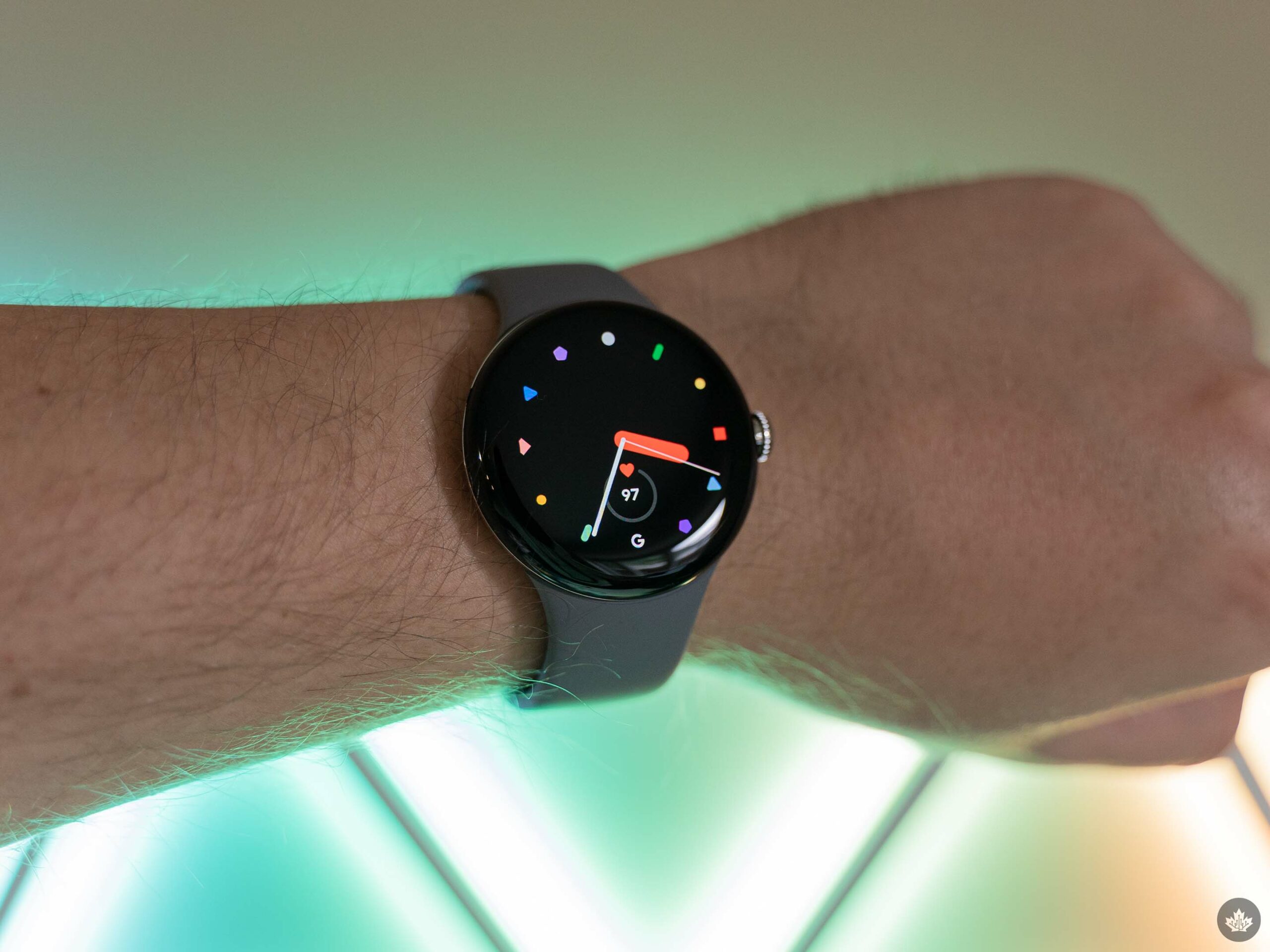
In fact, I’d venture so far as saying it’s actually pretty good — at least for a first attempt at a smartwatch. The Pixel Watch certainly isn’t perfect, but it does the basics well and lays the groundwork for future improvement. As with any Google product, there may be questions around the “future,” but the company’s senior vice president of hardware, Rick Osterloh, seems committed to the wearable. At least, he told The Verge as much, which may be about as close to a guarantee as we’ll get.
If you’re curious about Osterloh’s thoughts on the Pixel Watch’s future, I recommend reading that interview. But we’re here to talk about the Pixel Watch’s present, and presently, it feels like a jack of all trades. Thankfully, it’s also a master of some.
Specs
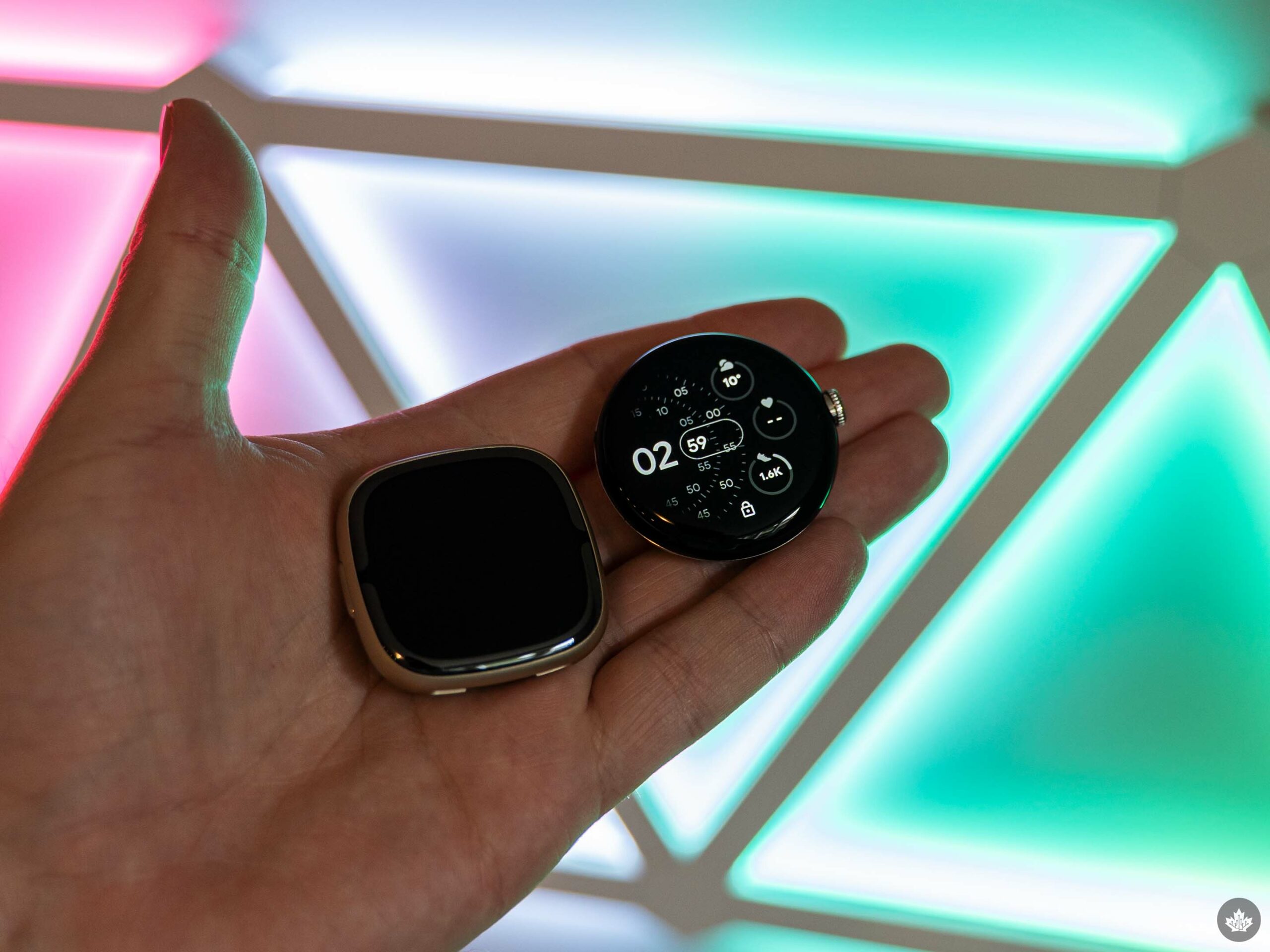
Fitbit Sense 2 (left) and Pixel Watch (right).
Before we get deeper into my thoughts on the smartwatch, it’s worth taking a look at what it brings to the table in the spec department. Like some of Google’s Pixel line, the Pixel Watch isn’t exactly the most powerful smartwatch on the market, but as I’ll get into below, that doesn’t matter as much as you might think. Once again, Google’s optimization magic seems to be running at full capacity here.
The Pixel Watch is available in the following colours ([watch colour]/[band colour]): ‘Matte Black/Obsidian,’ ‘Polished Silver/Charcoal,’ ‘Polished Silver/Chalk,’ and ‘Champagne Gold/Hazel’ (Google provided a Polished Silver/Charcoal LTE Pixel Watch to test for this review). Regardless of the colour option, each Pixel Watch case is made of 80 percent recycled stainless steel and comes with an ‘Active band’ made of “Fluoroelastomer with so-touch coating.” Bands come in small (130-175mm wrists) and large (165-210mm).
- Dimensions: 41mm diameter, 12.3mm height
- Weight: 36g (without band)
- Connectivity: 4G LTE (Cellular version), Bluetooth 5.0, Wi-Fi 802.11 b/g/n 2.4GHzm, NFC
- Compatibility: Android 8.0+
- Display: Custom 3D Corning Gorilla Glass 5, 320ppi AMOLED with DCI-P3 colour, up to 1,000nits brightness
- Power: 294mAh lithium-ion battery, USB-C magnetic charging cable
- Chip: Exynos 9110 with Cortex M33 co-processor
- OS: Wear OS 3.5
- Storage and memory: 32GB eMMC flash and 2GB RAM
- Sensors: Compass, altimeter, blood oxygen sensor (SpO2), multipurpose electrical sensor, optical heart rate sensor, accelerometer, gyroscope, ambient light sensor
- Water resistance: 5 ATM (can withstand pressures equivalent to a depth of 50 metres)
Smart, healthy, stylish
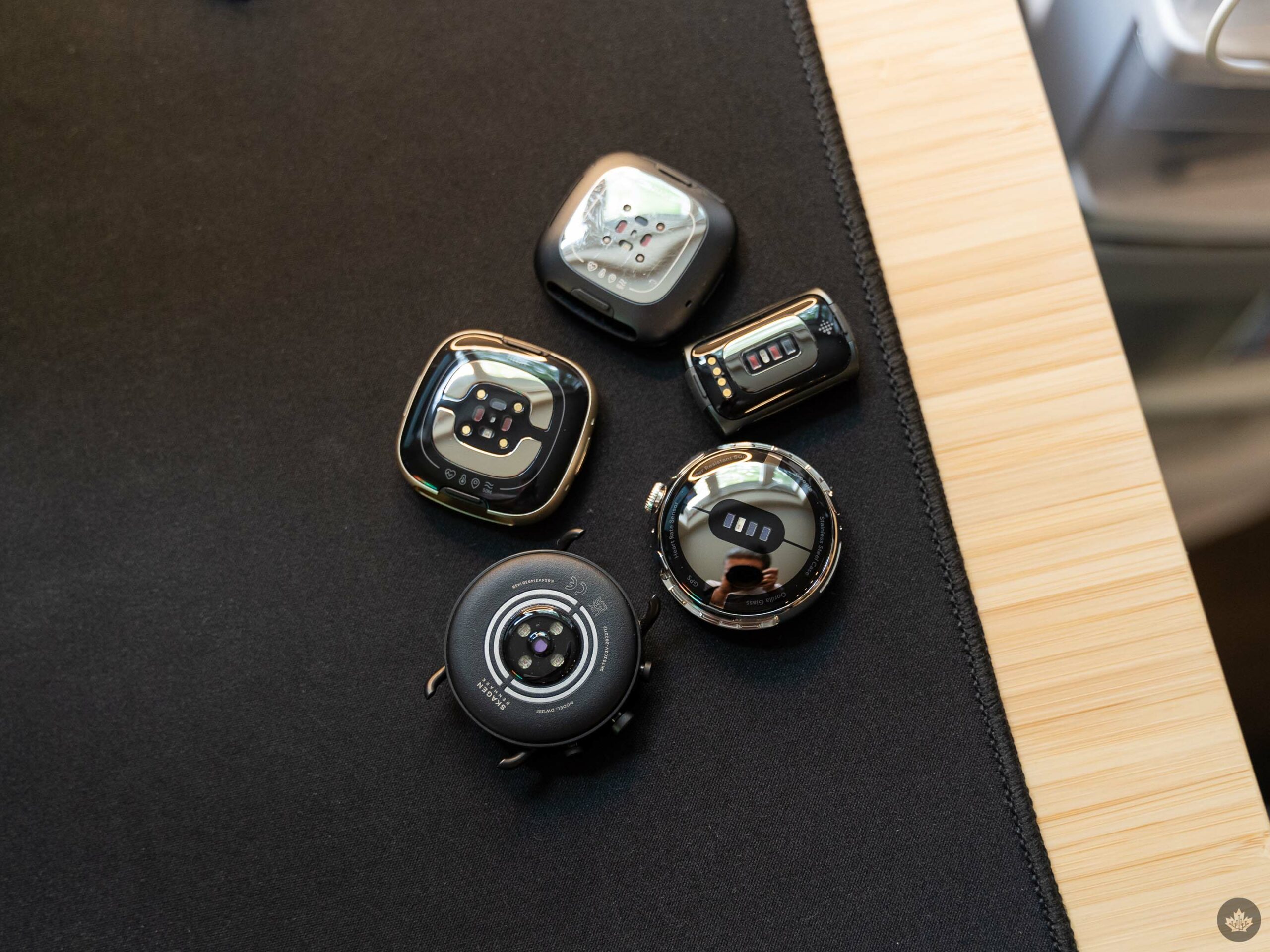
Google’s main pitch with the Pixel Watch is that it offers health (courtesy of Fitbit), help from Google intelligence, and a beautiful design. For the most part, those three pillars align with some of the best parts of the Pixel Watch, at least based on my experience with it over the last five days (which, unfortunately, isn’t enough time to test everything). From tracking my health metrics like heart rate and sleep, to taking advantage of the convenience of Google Assistant available at all times on my wrist, the Pixel Watch definitely checks the ‘health’ and ‘help’ boxes. As for design, well, that’s a little more subjective.
I’ll get into the health and help features as I go, but I want to start with design because that’s the first thing most people will engage with when they see the Pixel Watch. Moreover, I’ll focus on the watch itself since I haven’t tried any of the bands outside of the included Active band (which, for the record, feels really durable and comfortable on the wrist).
The Pixel Watch’s domed design looks fantastic. I’ve always preferred circular smartwatches to square options (although I don’t mind Fitbit’s squircle design for the Sense and Versa series). While the Pixel Watch isn’t the first to do a circular design, the dome styling feels very modern and lends the watch a unique look.
Some might critique the bezels, but frankly, they’re not nearly as bad as some claim. They’re not small, but the domed design does a fantastic job minimizing the bezels, plus most of the watch faces available are designed to blend into the edges of the display in such a way that it feels like the screen almost falls over the edge of the dome. To even see the bezels, you need to examine the watch from odd angles in direct light. It was rare to see where the screen ended and the bezels started in typical use unless I specifically sought it out.
Thick but light
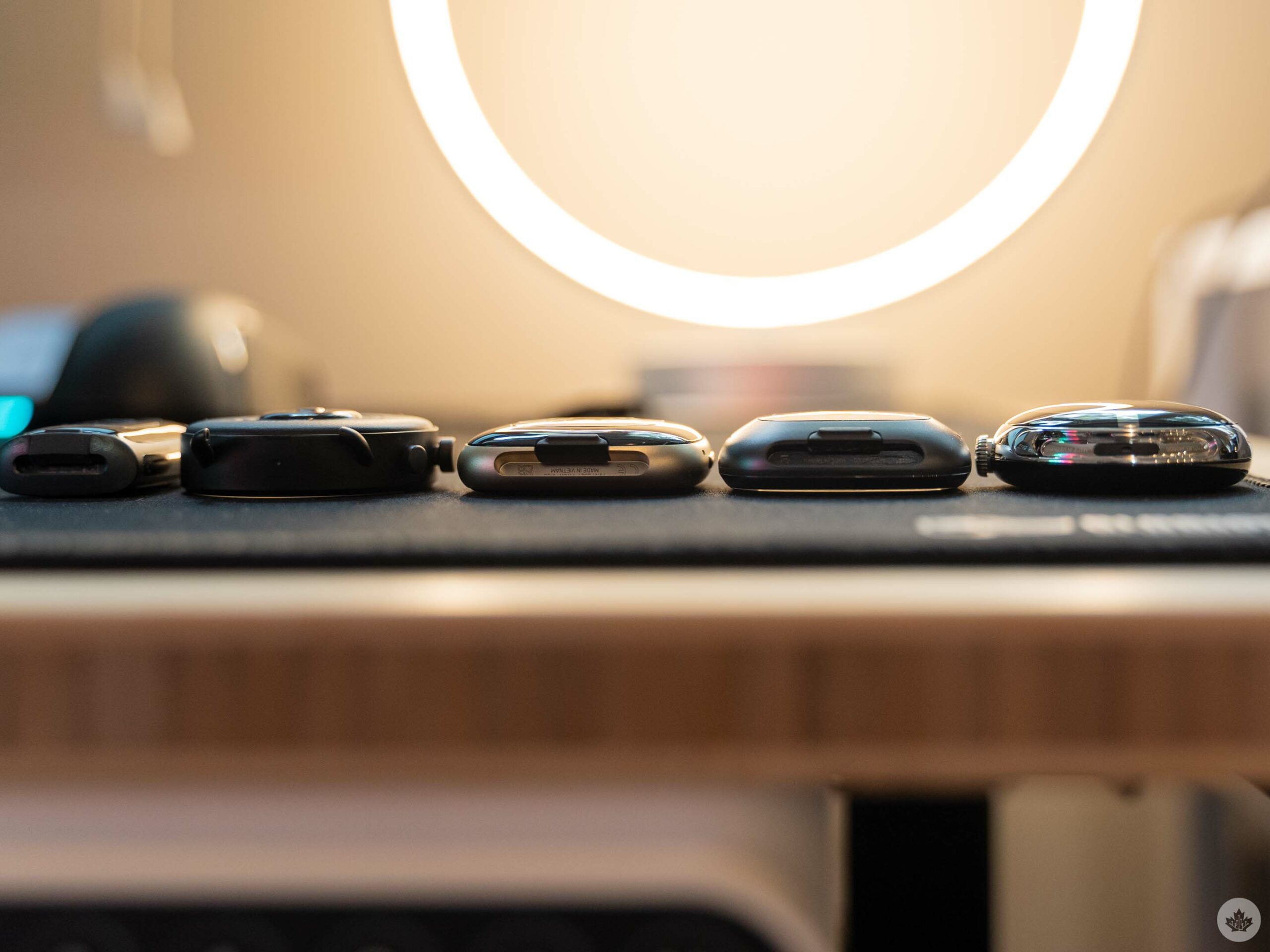
From left to right: Charge 5, Fossil Gen 6, Fitbit Sense 2, Fitbit Sense, Pixel Watch.
While I quite like the Pixel Watch design, I will note it’s a bit on the thick side. It’s certainly not egregious by any stretch, and the rounded design helps it feel great on the wrist. Still, side-by-side with other smartwatches, the Pixel Watch is a tad thicker (as shown in the pic above). It’s worth noting I didn’t have an Apple Watch Series 8 to compare with in photos, but the 41mm Series 8 clocks in at 10.7mm thick, a little less than the Pixel Watch’s 12.3mm.
Despite the thickness, the Pixel Watch is among the lighter smartwatch options. At 36g, it beats Fitbit’s thin and svelte new Sense 2 (45.9g) and the stainless steel variant of Apple’s 41mm Series 8 watch (42.3g). However, the same-sized aluminum Series 8 comes in a little lighter than the Pixel Watch at 31.9g, while the 40mm and 45mm Galaxy Watch 5 models are also lighter at 28.7g and 33.5g, respectively.
Weight might not seem like a big deal, but keeping things light can help avoid the feeling that the smartwatch is weighing down your wrist. Plus, with a fitness focus, having a lower weight is a benefit when you’re moving around.
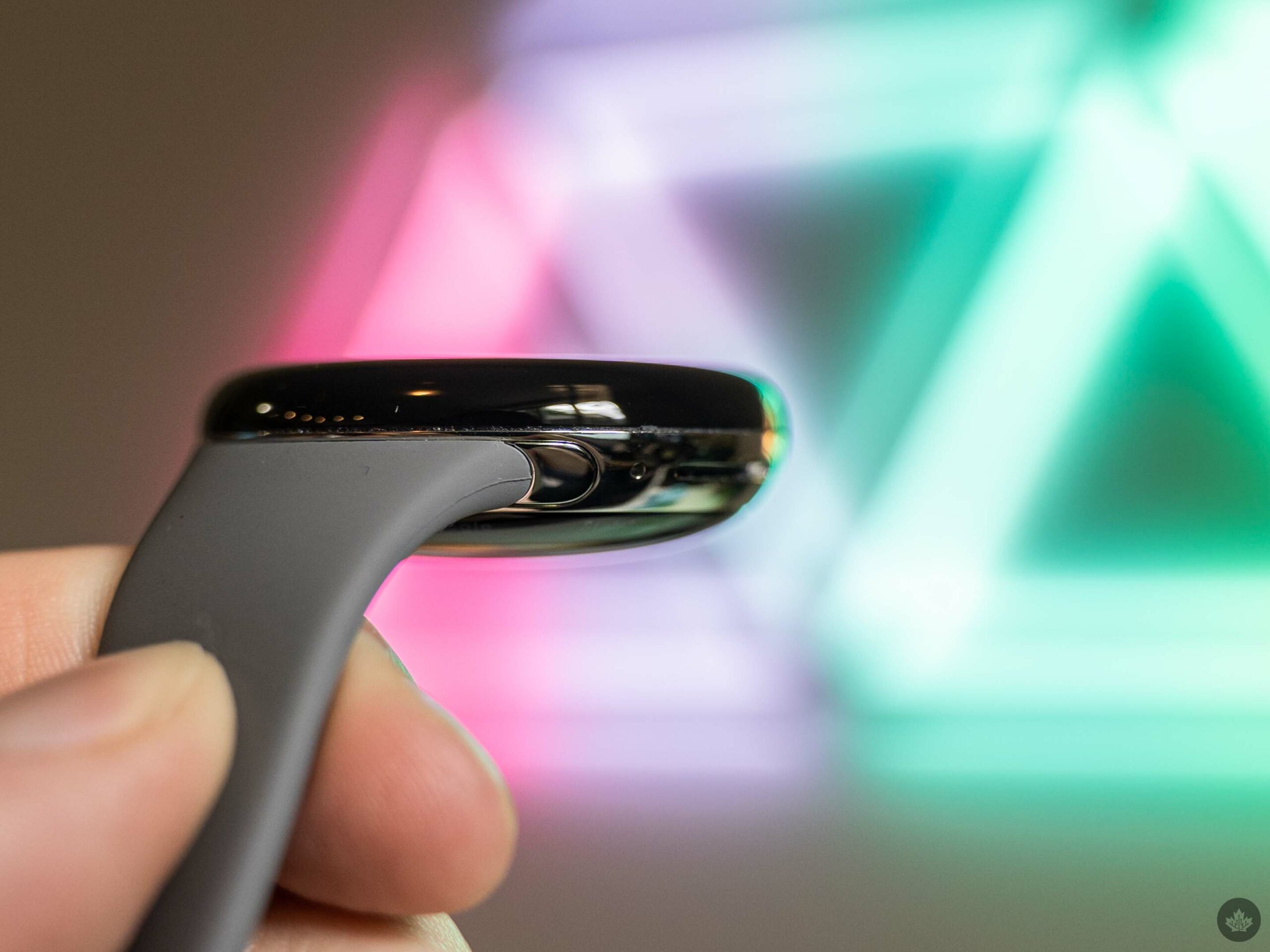
To keep this section short, I’ll run through a few other notes about the Pixel Watch hardware. The haptics felt pretty good, offering subtle feedback to interactions with the watch. The buttons were clicky and tactile with no play, and the crown offered a smooth scrolling experience punctuated by haptic responses. The health sensors grouped on the bottom of the Pixel Watch appear to match Fitbit’s Charge 5 tracker.
As for the display, it looks great most of the time. If you get up close to it, you can see the pixels, but like the bezel, you likely won’t notice them much in typical use. You will notice slight discolouration at lower brightness levels, especially with grey shades. It’s not a dealbreaker, but it’s worth noting that the discolouration is present.
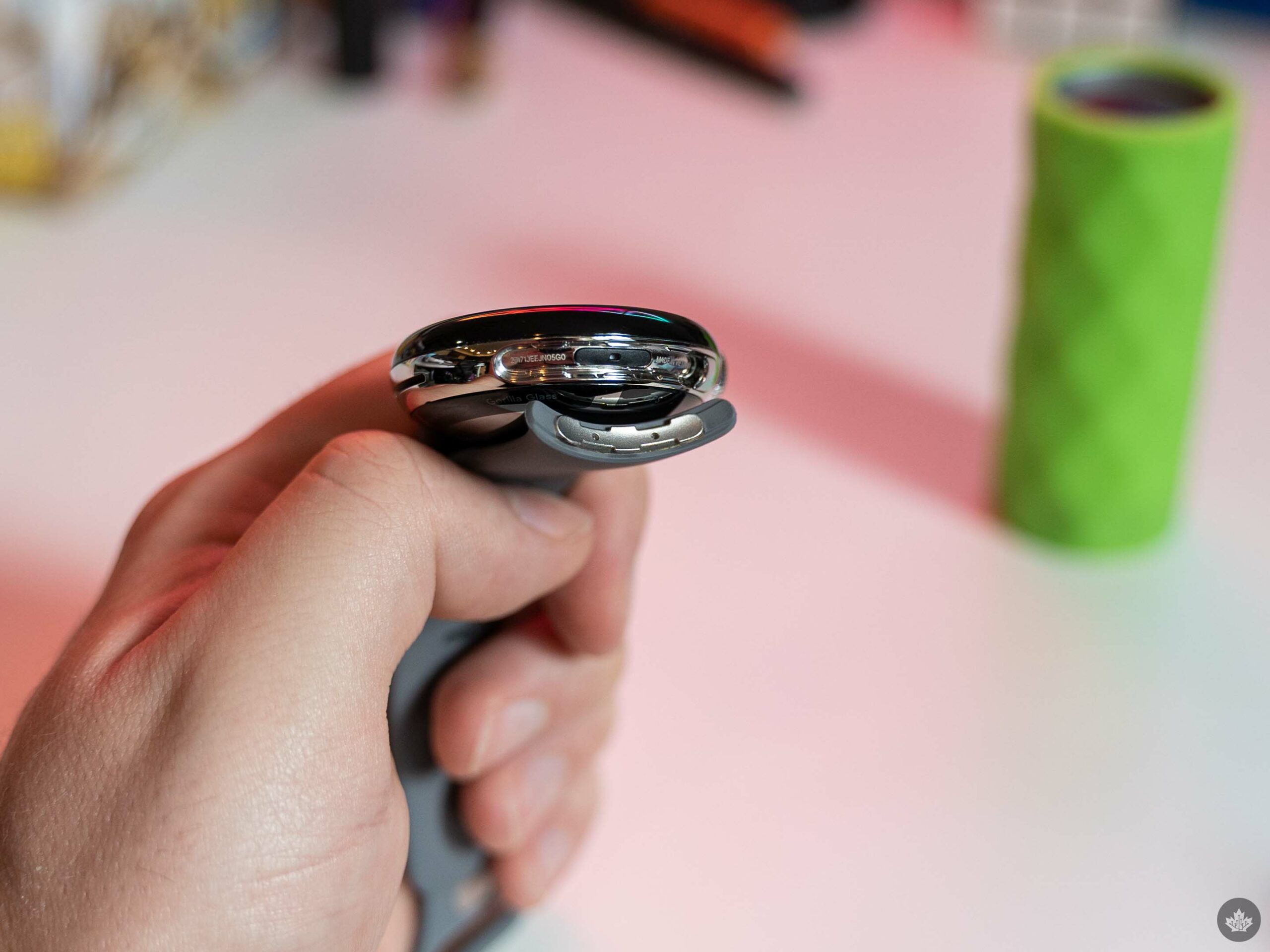
Finally, the Pixel Watch’s mechanism for attaching and swapping bands is excellent. The way the bands seamlessly flow out of the smartwatch looks great, and the mechanism is subtle and out of the way, but feels reliable. My only real complaint was that pressing the release button to disconnect the band felt a bit finicky, but I chalk that up to fat fingers.
Can’t have it all

One of my main worries about the Pixel Watch was that the Fitbit integration would feel second fiddle or tacked on to the Wear OS experience. I also had concerns about the added complexity of having to hop between multiple apps, in part because I was used to Fitbit devices where the fitness app and the wearable management app were one and the same.
Thankfully, both fears were largely unfounded. On the app side, after set-up, you can largely ignore the Pixel Watch app and just use the Fitbit app to check on health details. The Pixel Watch app does include access to some settings you won’t need often, as well as tools for customizing watch faces, but those same tools are available on the Pixel Watch and work just as well, if you don’t mind fiddling with them on a small display.
Moreover, the Fitbit integration didn’t feel tacked on at all. Instead, it was very front-and-center, with much of the default Pixel Watch set-up leaning into showing your health metrics. You can add plenty of Fitbit complications to watch faces, and the various screens you can swipe through on the watch are dominated by Fitbit health options, like steps, heart rate, sleeping details, and more.
The Fitbit experience actually felt very at home on the Pixel Watch and, in many ways, was better than my experience with it on Fitbit’s own wearables, thanks to the smooth navigation enabled by the crown. Opening Fitbit to get deeper insights into health metrics felt fast and fluid, whereas on Fitbit devices like the Sense (I, unfortunately, haven’t spent as much time as I’d like on the Sense 2 yet), doing the same felt janky. This extends beyond Fitbit to other apps on the Pixel Watch, but I’ll get into that more later.
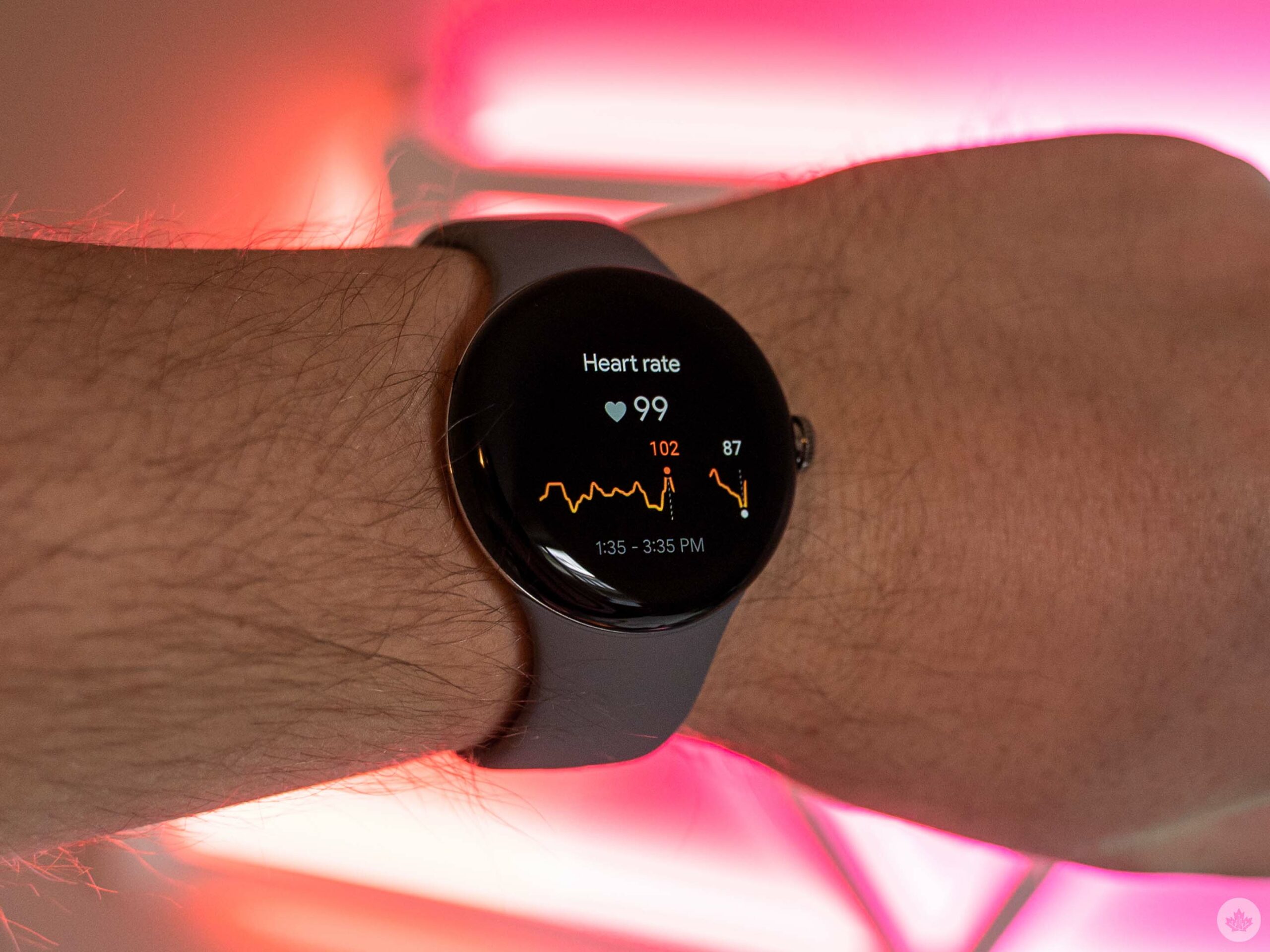
For all the positives with Fitbit on the Pixel Watch, it’s not perfect. Perhaps the biggest criticism is that the Pixel Watch is not the best device if you want all of Fitbit’s best health-tracking features. Notable omissions include SpO2 tracking (although the Pixel Watch has the hardware for it, and Google implied it’d come in a future update), auto-start and stop for exercises, swim stroke tracking, high, low and irregular heart rate notifications, a good chunk of the Sense series’ stress tracking features, Fitbit sleep profiles, smart wake alarms and more.
At the same time, the Sense 2 lacks some of the smart features offered by the Pixel Watch, like Google Assistant (the Sense 2 oddly supports Alexa, however, but the original Sense had both assistants), Google Maps navigation, and Google Wallet (though Fitbit Pay is still available). Maps and Wallet are coming to the Sense 2 “soon,” however. The Sense 2 also lacks a cellular model, losing out on features like Emergency SOS and Fall detection (which won’t be on the Pixel Watch until “this winter”).
“The Pixel Watch’s features fall more in line with typical smartwatch functions”
With that in mind, if you’re trying to pick between a Pixel Watch or Fitbit Sense 2, it’s worth taking the time to compare the features and see which one best meets your needs (both the Google Store and Fitbit website offer compare pages for the devices). In short, those who want the most health features with a dash of smartwatch should consider the Sense 2, while those wanting a smartwatch first with some useful health tracking should go for the Pixel Watch.
Smartwatch
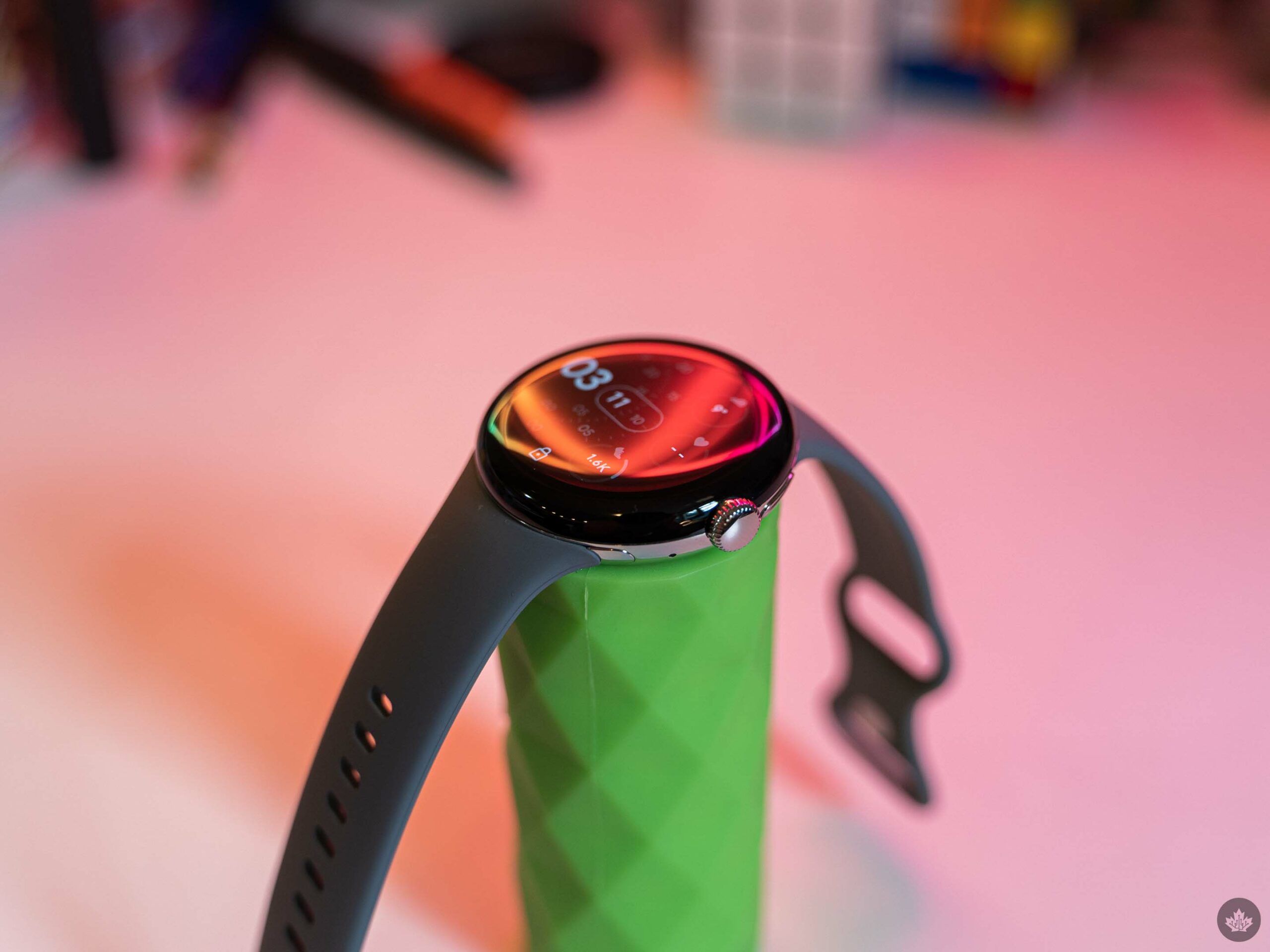
I’ve found that Google does a fairly good job making its smartphones feel smart, and the same is true for the Pixel Watch. Having Google Assistant on my wrist is incredibly helpful, arguably more so than on my phone, for two reasons. First is convenience – the Pixel Watch is almost always on my wrist, but I don’t always have my phone on me. The other reason is that voice control is a much better way to interact with a smartwatch than trying to navigate it by touch.
Assistant isn’t unique to the Pixel Watch, but it still feels great. The experience generally feels smoother and faster than on the Fitbit Sense or the Fossil Gen 6, other wearables I’ve tested with Google Assistant. That said, there is a bit of rhythm to adapt to when using Assistant, as there’s a bit of a pause between activating it and when it will actually register your voice. On more than one occasion, I spoke my command too quickly, and the Assistant missed some or all of what I said.
Having turn-by-turn navigation from Google Maps on my wrist is also incredibly handy. I played around with it a little, and it seemed fairly smooth, but I’m looking forward to trying it more next time I go somewhere and need navigation.
Beyond that, the Pixel Watch’s features fall more in line with typical smartwatch functions. Google Wallet is handy for making payments without digging out your wallet or smartphone, but most smartwatches support payments in some way. You can view incoming notifications from your smartphone and respond to messages with your voice, a surprisingly capable on-watch keyboard, emojis, or contextual auto-responses. Again, this is not necessarily unique to the Pixel Watch, although voice-to-text is very capable (albeit not to the calibre of the Pixel 6 or 7’s Assistant voice typing).
As an aside, responding to messages was one of the few places I noticed any lag or jitter on the Pixel Watch, with the animations that play after sending a message often dropping frames or not even playing at all. However, it never impacted my ability to respond to messages.
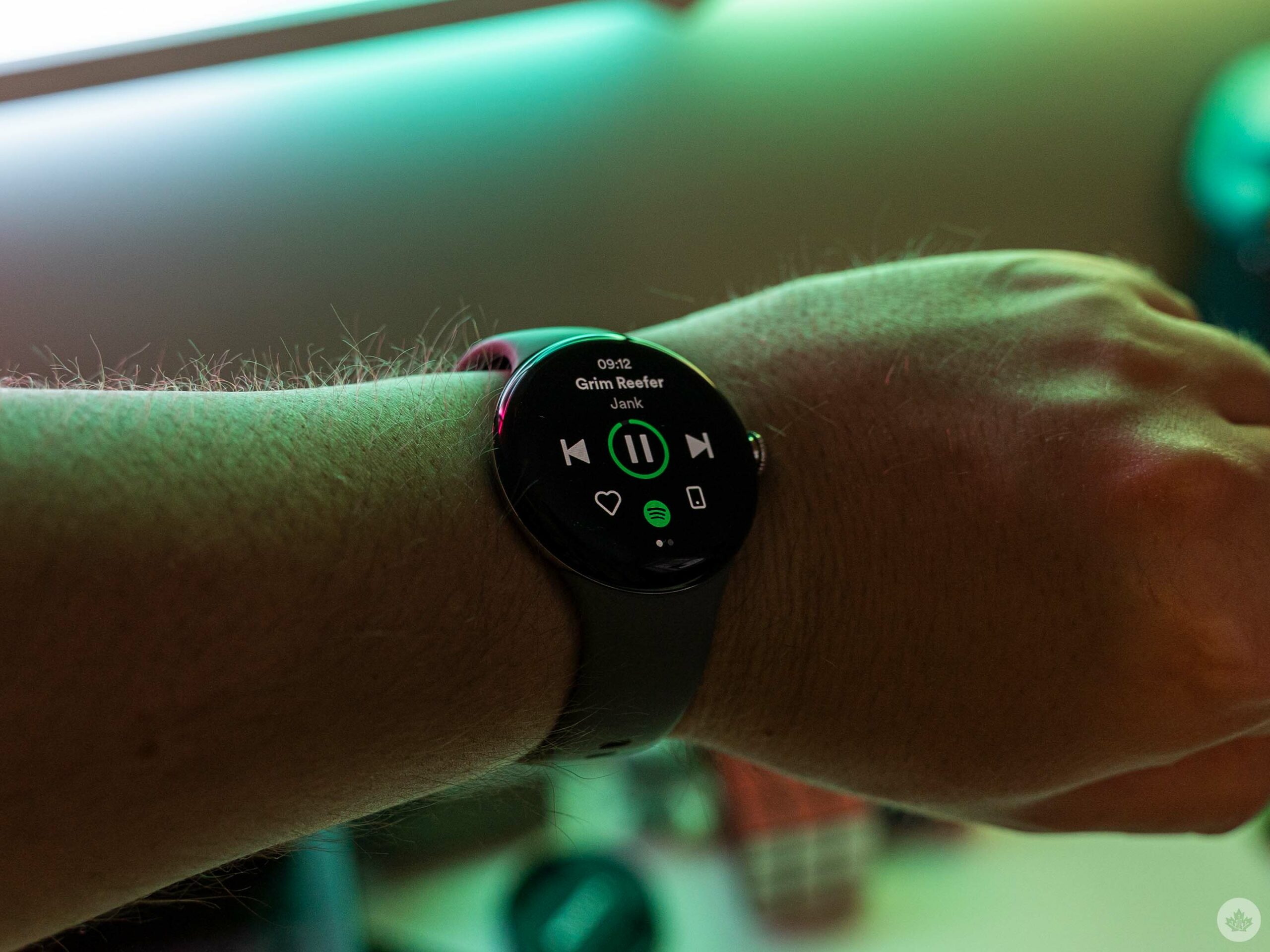
Spotify on Pixel Watch.
The Pixel Watch also features a built-in Play Store for finding and installing Wear OS apps. Most staples are there, from fitness apps like Strava and MyFitnessPal to Spotify, YouTube Music and more. That said, what’s available likely doesn’t stack up to the Apple Watch in part because of Google’s wavering support for the wearable OS. Hopefully, with its renewed commitment through the Pixel Watch, we’ll see more third-party developers brings apps to Wear OS. If you rely on third-party apps, check the Watch apps section on the Play Store (available here) to make sure what you need is available.
That said, most of my needs were covered by the apps that came with the Pixel Watch, and most of my time on the Play Store was spent downloading apps I thought would have come on the Pixel Watch, like the Google Camera app for remote controlling the Pixel 7’s camera.
Battery is a weak spot
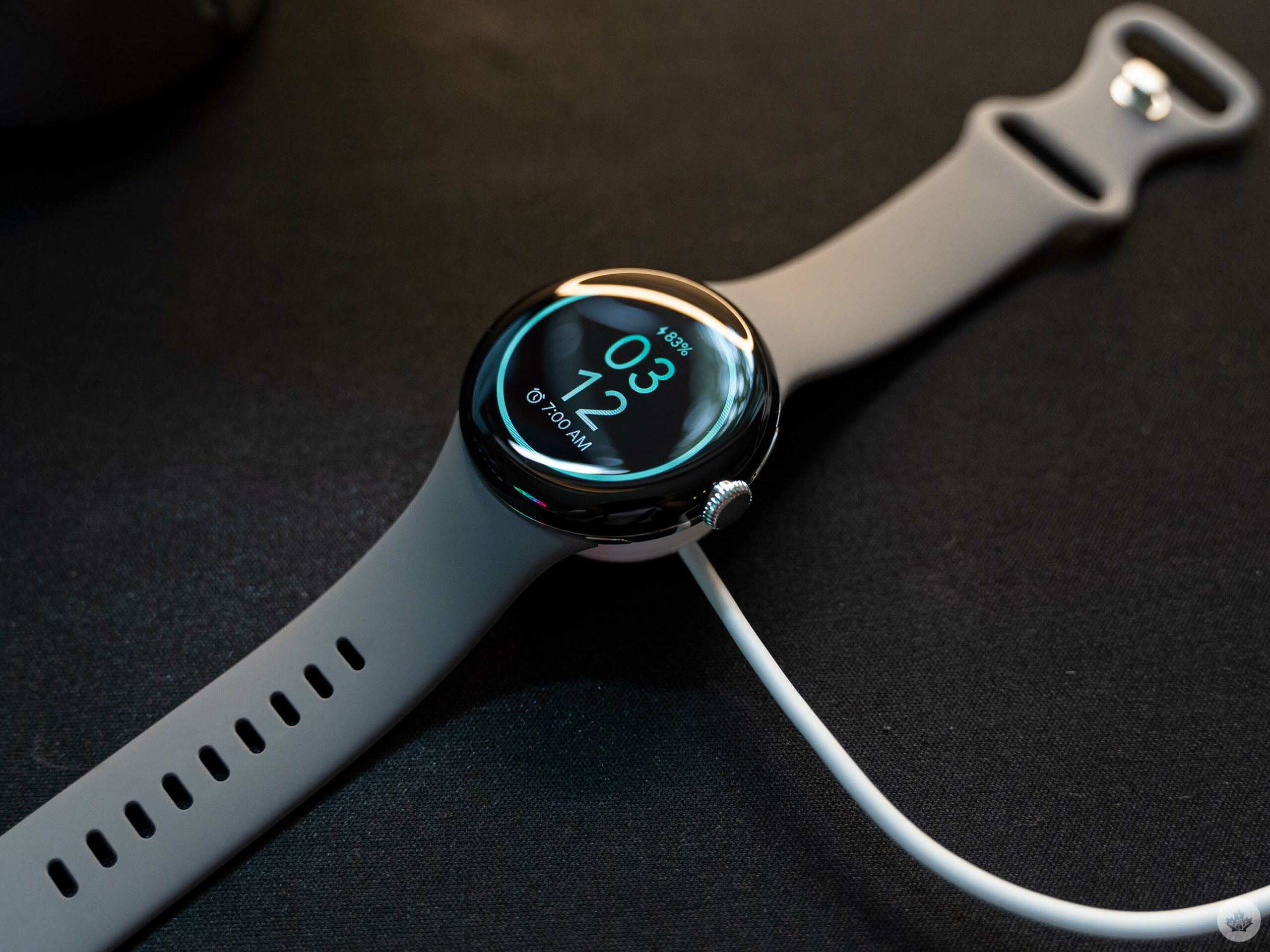
While my experience with the Pixel Watch so far has been mostly positive, one area of frustration is the battery life. Google claims 24 hours of battery, but I never hit that on default settings with always-on display enabled. That might be different on the non-LTE version of the watch, but at least on the cellular model, I saw an average of 21-22 hours of battery life.
Arguably that level of battery life would be more than fine if you didn’t want to wear the Pixel Watch at night, but with Fitbit sleep tracking being one of the main features, you do need to wear the watch overnight. And even with using features like the watch’s Bedtime mode to turn off the display and mute incoming notifications, it still barely lasted through the night. This problem isn’t unique to the Pixel Watch, with Apple’s Watch Series 8 offering a similar battery experience.
In other words, if you want to use the always-on display, you may need to adapt your routine to include charging the watch before bed. In my experience, you need more than a 30 percent charge on the watch if you want it to last through the night. It’s doable, but I ultimately switched off the always-on display to get a few more hours out of a charge and reduce charging anxiety. Coming from a Fitbit Sense, it’s definitely a drawback – my original Sense easily got me through two days on a charge (although Fitbit advertises six days of battery life).
Speaking of charging, the Pixel Watch’s magnetic charger gets the job done, but I was surprised by how weak the magnets were. I found that the band put downward pressure, lifting the watch off the table enough for the charger to disconnect and drop off the bottom of the watch. I ended up charging the Pixel Watch on its side most of the time to help keep the charger connected.
Google says the Pixel Watch can charge 50 percent in 30 minutes, 80 percent in 55 minutes and fully charge in 80 minutes, which is more or less what I experience with my review unit. I did notice that the watch felt warm whenever I put it on after charging – not warm enough to be uncomfortable, but enough for me to notice.
Everything else
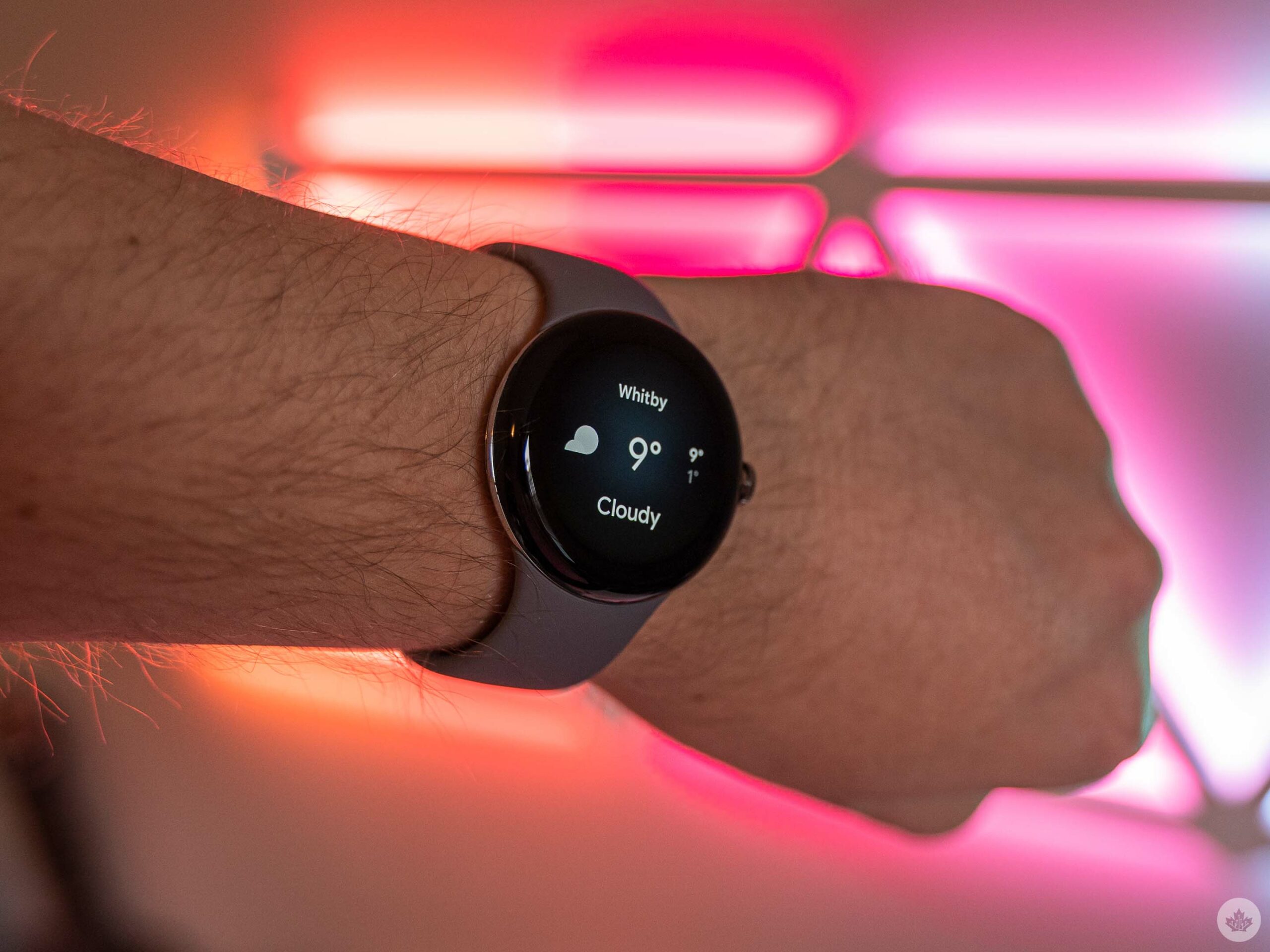
That covers the majority of Google’s Pixel Watch, but there are a few loose ends to tie up. For one, I wasn’t able to put Emergency SOS or fall detection through their paces, the former because I thankfully haven’t been in an emergency while testing the watch (and hopefully never will be) and the latter because it won’t be available until the winter.
It’s also worth pointing out that the speaker on the Pixel Watch is fairly middling. I didn’t expect a groundbreaking audio experience, especially out of the tiny speaker on a smartwatch. The speaker is fine for what you’ll use it for, namely hearing Google Assistant responses and the occasional on-wrist phone call, but that’s about all it’s good for.
“The most notable bug was the Pixel Watch factory reset itself after I connected it to the Fitbit app for the first time”
I’d also like to point out that if you’re aiming to get the cellular Pixel Watch, expect your wireless bill to go up by about $10/mo, depending on the carrier. The Big Three all charge $10/mo for various smartwatch plans, which either extend your smartphone’s number and data bucked to your watch or extend the number and give your watch a separate data bucket.
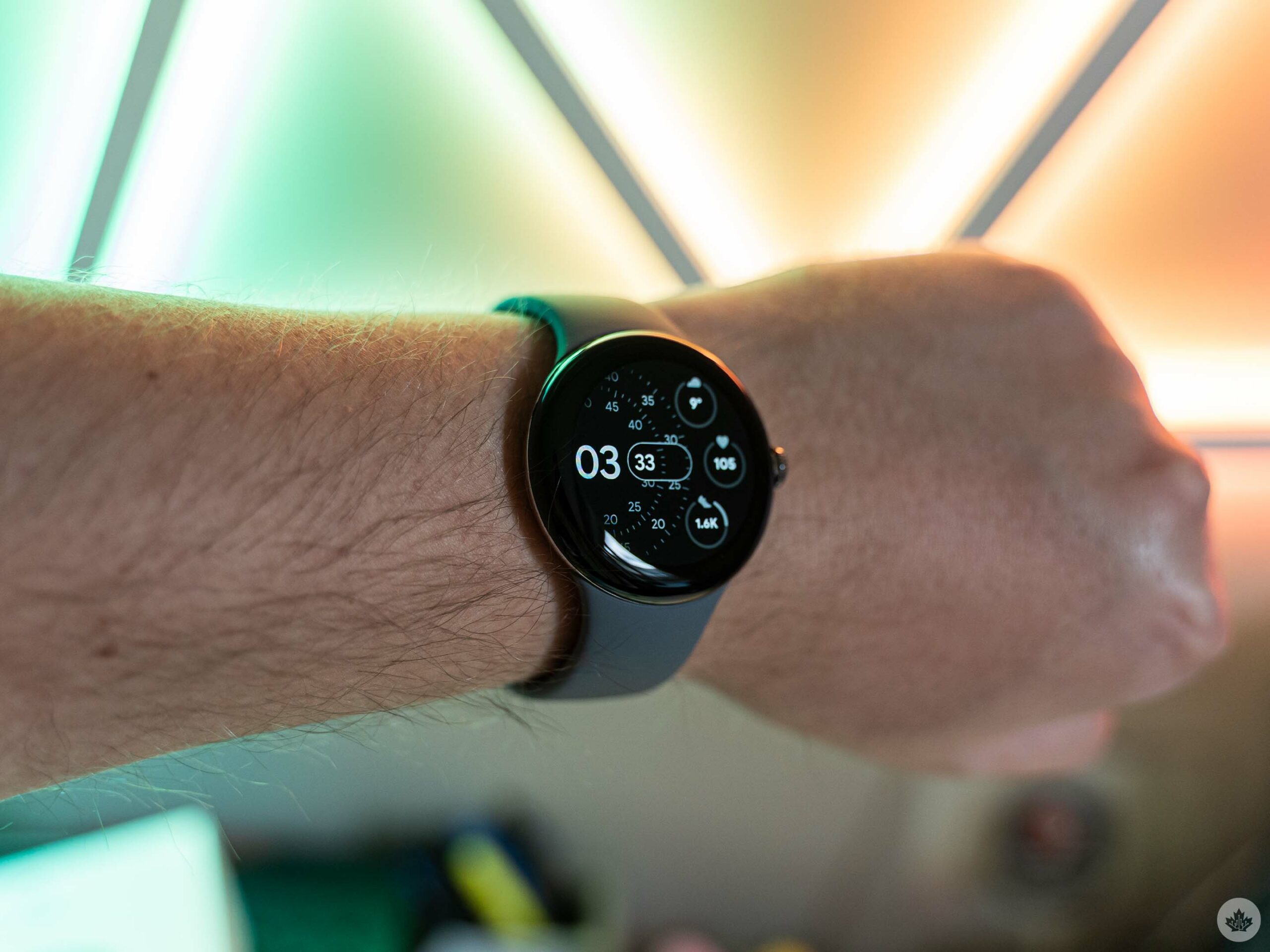
Granted, $10/mo isn’t a ton of money, but it will add up over time and is yet another frustrating fee you’ll need to pay.
Finally, I did encounter a few bugs, although perhaps less than expected for a new Pixel device. The most notable bug was the Pixel Watch factory reset itself after I connected it to the Fitbit app for the first time. I’m not sure what exactly triggered this, but when I set the device up the second time, I didn’t encounter the issue again. The other bug I experienced was that the Fitbit app kept giving me an error whenever I tried to initiate a sync with the Pixel Watch manually. However, background sync worked fine, and the issue went away after some software updates, so I’ll chalk that up to pre-release software.
Stacking up to the competition
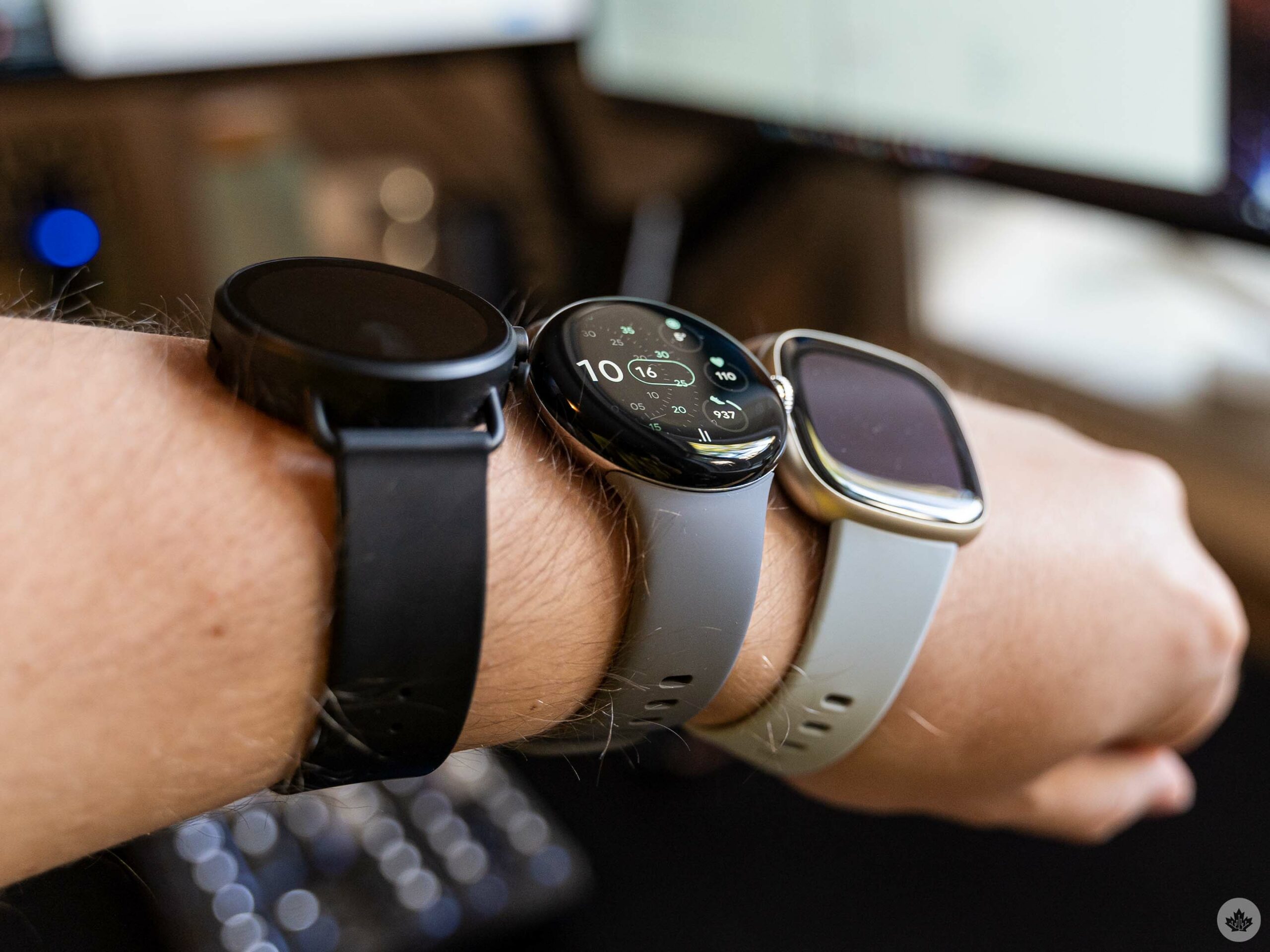
From left to right: Skagen Falster Fossil Gen 6, Pixel Watch, Fitbit Sense 2.
The Pixel Watch starts at $449.99 for the Bluetooth/Wi-Fi variant and $529.99 for the LTE variant, with the only difference being support for LTE and, by extension, cellular features like calling and messaging (without your phone nearby), Emergency SOS and fall detection.
That puts it in an interesting position as it’s more expensive than the Fitbit Sense 2 at $399.95 and some Galaxy Watch 5/5 Pro models, which range from $349.99 to $629.99 depending on size and LTE support. On the Apple side, the Watch Series 8 starts at $529 for the GPS version and $659 for GPS + Cellular. The Watch SE is $329 and $399, respectively, and I’m leaving out the Watch Ultra since it’s arguably in a class of its own at $1,099 (and it doesn’t have always-on display).
Of course, comparisons to the Apple Watch are tricky given that the Apple Watch only works with iPhones and the Pixel Watch only works with Android phones. In other words, you should probably decide whether you want a Pixel smartphone or an iPhone first, then pick your smartwatch accordingly.
That leaves the Fitbit Sense 2 and the Galaxy Watch5 as the only real comparison. Granted, there are other Wear OS smartwatches out there, but as I noted with the Fossil Skagen Falster Gen 6, they’re not great. Wear OS 3 on the Pixel Watch solves many of the complaints I raised about Wear OS 2 on the Gen 6, and I’m excited to see how other watches stack up once more are running Wear OS 3.










